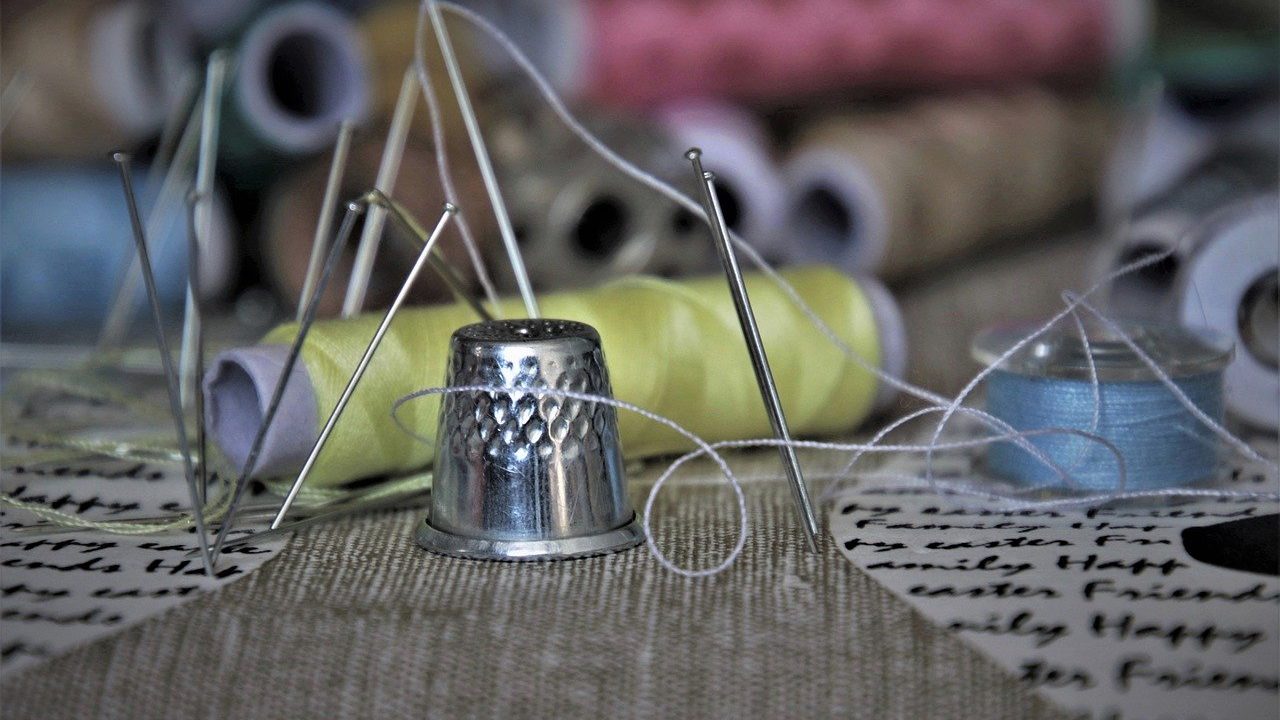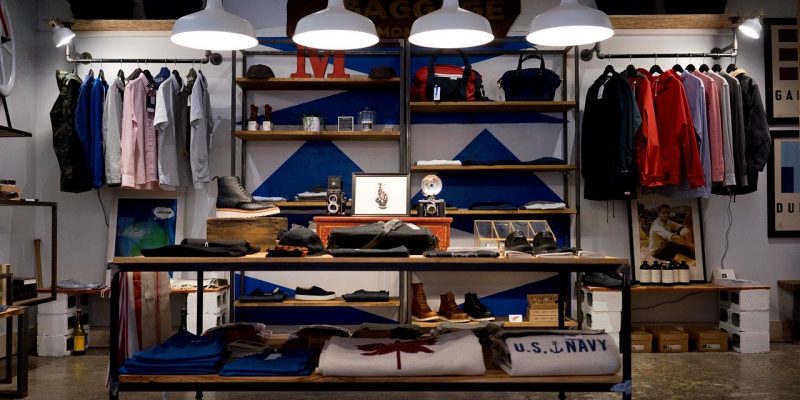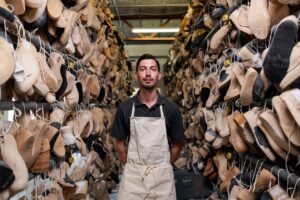Starting a brand of clothes can be a great way for an entrepreneur to create a new business. If you’re trying to create a basic line of printed garments or would like to develop a whole range of cut & sew featuring different items and decorative additions, this article will teach you how to begin a line of clothing. Depending on the sort of clothing line you choose to create, there are likely to be several different steps associated with the process. The longer you want to be interested in clothing manufacturers and developing your line, the more time, commitment, and resources you’re going to have to spend.
How to start a clothing line
If you’re only excited to begin something short and simple, there are options for all of that, too. In this article, we’re about to teach you a step-by-step guide on how you can launch your own line of clothes if you have a modest budget of $1000 or more than $500,000 to spend. So let’s begin:
001 // Pick a Business Model for Your Clothing Line
It’s really good to write and execute a business model at the outset of your company. This strategy would support decision-making and map out how you will accomplish your goals for the next few years. If you’re prepared to start a brand of clothes, you’ll have some essential decisions to consider at this stage. There are a variety of paths you can take to build your own label that is very unique from each other. Moreover, and most critically, costs and time inputs differ significantly.
Most popular types of Clothing Manufacturing
· Print-On-Demand
· Custom Cut & Sew Clothing Line
· Private Label Clothing Line
Print-On-Demand Clothing Line
The first and simplest way to begin your own clothing line is to print your designs or emblems on a conventional blank piece of clothing. This is an appealing alternative for people with an average budget and those who want to profit from the ability to set up an almost wholly automated company.
The print-on-demand or direct-to-wear printing procedure utilizes a specific digital ink-jet printer to print ink onto clothing and accessories directly. These digital printers are capable of producing full-color images with great precision. Print-on-demand printing generates good quality printed clothing rapidly and efficiently. There are no setup costs, except for screen printing, due to this. This means that printing small orders is convenient and cost-effective. The main disadvantage to this business sector is the lower profitability and the absence of the ability to discern your product from things like stuff, stitching, and fit because you are using conventional wholesale garments.
Custom Cut & Sew Clothing Line
Customized cut & sew clothes imply you’re doing it all from designing your sketches, converting them into trends, buying fabrics and manufacturing companies, and having to pay for an entire production run.
This can be an extensive phase and can take at least some time to get running smoothly. You’re going to need to seek a manufacturer able to do tinier runs; you’re going to have to work with a pattern maker, you’re going just to have to procure and test the fabric, and make quite a lot of samples before you even get close to the final piece. This can end up costing you thousands.
Wholesale/Private-label Clothing Line
This approach involves buying blank apparel items that you will need to modify by adding print, logos, stickers, etc. Since you’re buying bulk stock in advance, you’re also going to need to find out how to store and ship your goods.
When buying blank clothes and clothing products in abundance, you get a decent deal that makes for higher margins. As a bonus, by buying goods inventory beforehand and not printing/shipping explicitly from the printer, you have more robust control over the final item, giving you to add specific details such as tags and handcrafted labels. This enables you even further to influence the relative value of the product to achieve higher margins.
Screen printing is an old method. As among the most common printing methods on garments and apparel, screen printing can generate a long-lasting and sturdy outcome. It has a labor-intensive setup process, which implies that screen printing is the most cost-effective when done in large quantities.
002 // Find Your Niche
Once you have built a business strategy, the next step in launching an apparel line would be to discover your niche in the marketplace and the business.
Usually, the most influential organizations find an issue on the market and then develop a product to solve it precisely. That being said, at this point, you don’t need to delve too heavily into market analysis. The concept of a particular piece of clothing may show itself when you live your daily life.
It’s a unique journey to start a clothing company. You’re a talented person with something else to share in a fast-moving market. You may have found a business void or have a unique design in mind for a particular consumer community.
Whatever the motivation for getting started, it’s essential to identify your out-of-the-box niche. Are you searching for details on, for instance, how to launch a sports fashion label or a women’s clothing line? You may be preparing to create a following for a particular piece, like the world-famous shirts.
Or could it be a specific theme that you have insight into for your apparel line? It may also be a cloth company formed out of a common need or concept, from cruelty-free fashion to pregnant women accessories. Consider your niche, and keep it in mind. And as you venture out and add many different designs as time progresses, the initial vision gives you a legacy, a guiding philosophy, and a purpose to recall.
003 // Understand Your Customers
If you’ve achieved your business plan, now you need to consider the customer you’re working for. Your models, fabric options, procurement and development budgets, and retail locations all have to reach your target population spending, style, and stylistic preferences—so don’t get focused on any of the above until you delve deeper into knowing your foundation.
Part of this research should include competitiveness analysis: evaluating firms whose merchandise, marketing, and advertising methods you respect and whose strategic goals you share. Fortunately, this study does not inherently require specific expertise or resources. If you have internet access and social media accounts, you will collect useful knowledge about your clients and how to design and sell your product to everyone.
004 // Prepare A Budget for your Clothing line
During the first few months, it’s worth keeping things as simple as possible. Having started with a design that you adore, understand how to fabricate (or purchase), and have had a lot of feedback, it can be a lot simpler than launching with a long catalog of products. Your budget will also rely on whether you intend to fashion and produce clothes yourself (or through a manufacturer) or whether you purchase garments from manufacturers at a wholesale price. Anyway, begin a bit. Engage with smaller designers and/or necessary materials to get started, and as demand develops, you can evaluate your key outputs.
005 // Decide What Products Are To Be Sold
You’ve analyzed the marketplace, you’ve explored your niche, and now it’s the moment to use that information to choose whichever products you’re creating and selling.
Develop a Business Ideas Board that you adore. Build a list of brand names that you appreciate and styles you want to be included in your store. Please ensure they all work together in such a coherent look and feel and satisfy the specified audience’s requirements. Consider taking small steps, mainly if you’re producing the goods and using a drop shipper.
006 // Set the Price of the Clothing line
To this end, before you can finally launch your line of clothes, you’re going to have to pay for your items. If you’ve found your supplies and made them, you’ll have a better idea of how much it costs to launch your line of clothes so that you can market your pieces accordingly.
With the pricing, you’re going to find a balance between generating a profit and setting the price that consumers can pay. That being said, the consumer analysis can come into the equation in pricing—you may already have an idea of who your audience is, what their buying preferences are like, as well as how much they’d be able to pay on your goods.
007 // Create Your Clothing Brand Name
Now it’s time to start putting together all the components you’ve worked on so far to develop a unifying brand position. Once you get your business up and running, you can use all the features that align together very well to create a reliable, coherent brand that your viewing public will confide in, absolutely adore, and want to buy from. You’re likely to be innovative as a fashion or clothing amateur. And this will hold you in the right place to create a product for your developing clothing company.
Choose a brand name that resonates with the target audience. For example, you should choose a brand name depending on the characteristics of your intended audience. And if your store has its innovative styles, you can always use it as your brand’s name.
008 // Market Your Clothing Brand
When you’ve decided where you’re going to sell your brand of clothing—whether it’s your retail shop, a website, or whatever else—you’re finally going to have to look through your items. To this point, without a strategy to market your goods, all the research you have done to hunt down your producers would be in vain.
That being said, you wouldn’t need a massive marketing plan or even prior business and marketing expertise to highlight your brand successfully; in reality, many startups use their (free) social media pages as their key marketing platforms. Apart from their affordable prices, websites such as Facebook and Instagram offer greater openness and access to the user base that modern customers admire.
009 // Evaluate The Product
Bringing your products on the marketplace can be a perfect way to test the goods without contributing to the full product sprint. Market trade venues, school fairs, and online forums, including Facebook Platform, can be excellent ways to look, take notes and question your buyers for input on the product all the time and whatever else they’re searching for.
You’ll notice that the test phase never comes to an end when you’re continuing to introduce new goods to the range indefinitely and figure out what’s selling and what’s not common. Reviews are an essential source of market currency and a path to stimulate your progress, so take that on board and improve your excellent goods.

How to work with clothing suppliers
Another basic yet essential thing to consider when starting your clothing brand is a great clothing manufacturer or company. Let’s discuss a step-by-step guide on how you can communicate and work efficiently with your clothing manufacturer.
001 // Make a Good first Impression
Having a robust first image of a manufacturer is a perfect way to launch your business relationship. Present the brand and yourself. Give them enough information to make sure you’re the right customer and ready to do serious business.
Highlight your dream and the specialties of your brand. Share quite enough information as you can on that. If you promote those special characteristics that make your clothes pop out on the marketplace, disclose them to the suppliers so they’re more vigilant of certain information.
Besides, inform them about your professional history and experience in the garment industry. This could represent the way the producer deals with you. When you have little expertise, they will not believe that you know any tricky facts about the manufacturing process and take some time to clarify the most important facets of it to you. Whereas, if you’ve already had any familiarity with clothing creation, the spouses would be chasing and using more elaborate language.
If you have an impulse to discuss your economic position with the manufacturer at your very first encounter, try to stifle the urge.
002 // Request for Quotation from Clothing Manufacturers
Be very precise when asking for a quote. Ask for an amount which you have insight into. Seeking a quote for 1 million things may raise concerns, and your transaction will not be seen as a significant marketing opportunity. Be firm with the figures. If you are involved in a quantity spread, inquire about the words for greater or lesser quantities. They could give you a special deal for a more considerable amount of output.
Many garment manufacturers worldwide lack negotiating skills, particularly in smaller factories. Because of this, international investors are not persuaded to make a trade with them. This lack of understanding is mostly attributed to inadequate preparation or lack of marketing and negotiating skills.
Larger manufacturers have developed this skill over time but are also influenced by local culture and traditions. In particular (Arab) societies, ‘negotiation’ is deemed obligatory and a symbol of respect between them. Spending effort to negotiate such minor sums is only part of the process. Most westerners do not recognize this and see this action as “complicated” and “dishonest.”
With time and building a trusting and healthy working relationship, thought, methods and actions will be “adjusted,” but this can take time. Recognizing this at the outset and again – graciously embracing and responding to it, is indeed the only path ahead.
003 // Stick with your budget
Set the budget and determine how much of the variance you can allow. Then ask the producer if they should reach him. To ensure the average price of development, the skyrocket does not require a thorough breakdown. The request for cost per unit may appear to be the most transparent way to do this. Sadly, it is always difficult to measure before the first sample is made. In this scenario, call for the expense to be broken down into categories that contain various clothing elements.
004 // Clarify The Procedure
To keep records of the manufacturing process, take the time to understand the measures involved in dealing with that specific producer. Please take care of the general timeline.
005 // Stick To The Timetable
Establish a schedule and ensure that the manufacturer will comply with the terms and conditions. If not, inquire what changes should be made to the procedure to be done within the timeline.
006 // Stick to the time table
Regarding the payment terms, you may want to sign an agreement. If you pay upfront, it is in your best interest to specify the names of the output. Secure your company by setting targets and responsible for the costs in the case of accidents or other unexpected incidents.
007 // Get the Total Cost
Costs for garments’ manufacture may or may not include marking, packing, storage, importing, and exporting duties. To prevent frustration, please indicate this early in the cycle. You can estimate the total cost by doing product validation.





2 thoughts on “How to Start A Clothing Line and Work with Clothing Manufacturers // Complete Guide”
If you re an entrepreneur who wants to launch your own clothing business with custom products, you ll need your own designs. What s more, you ll also likely need to work with a clothing manufacturer to turn these designs into products.
Absolutely fantastic post and interesting. I really hope to start my own clothing line soon!